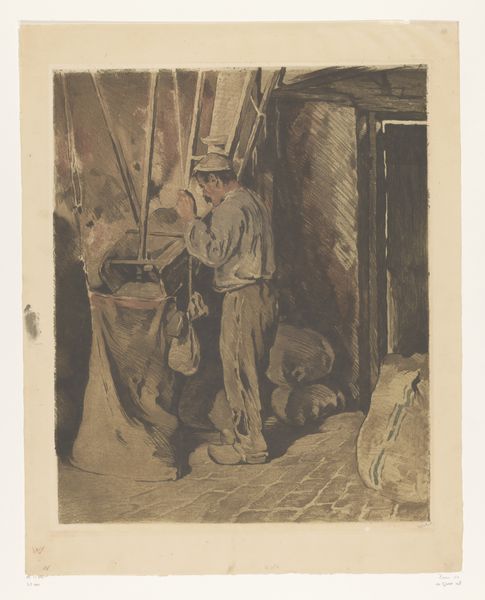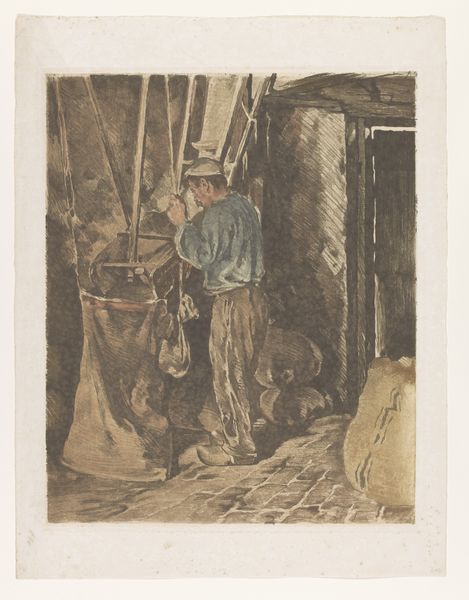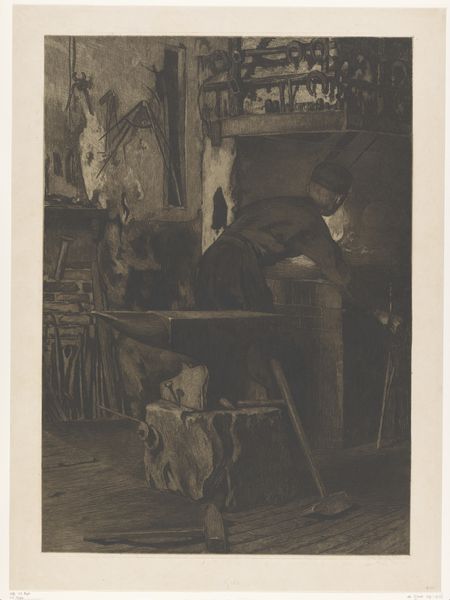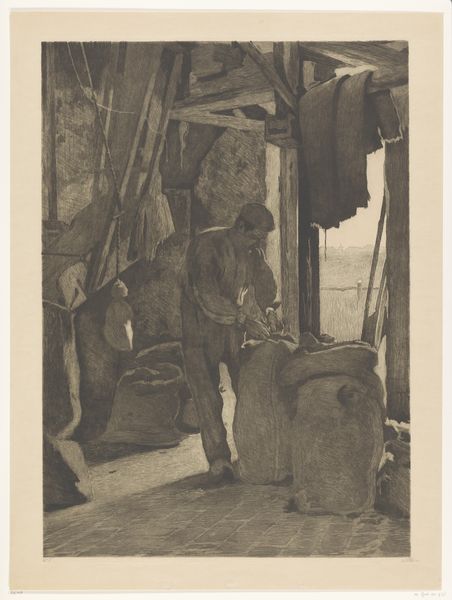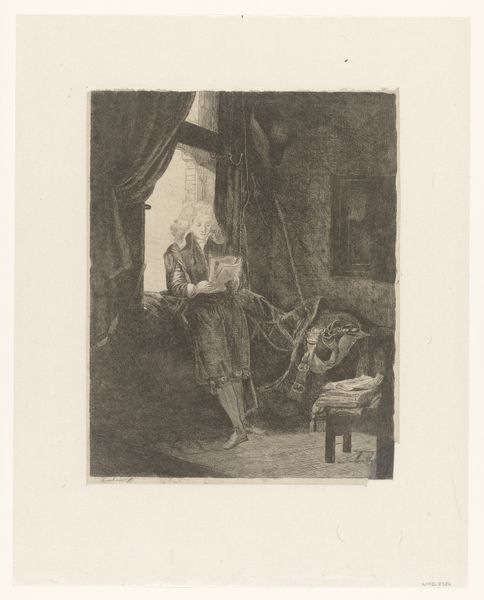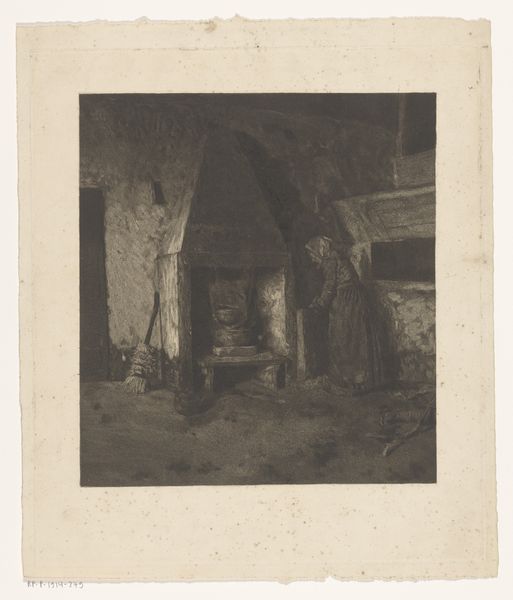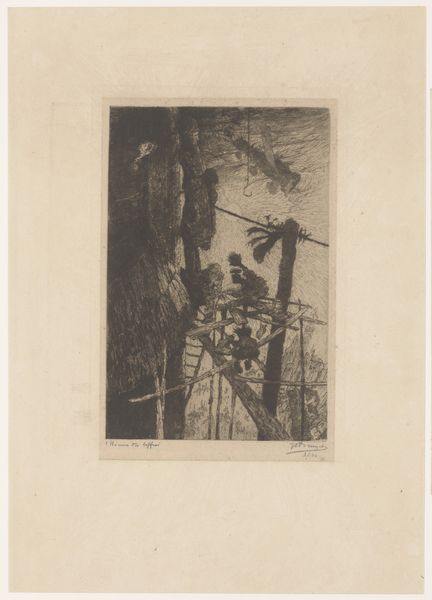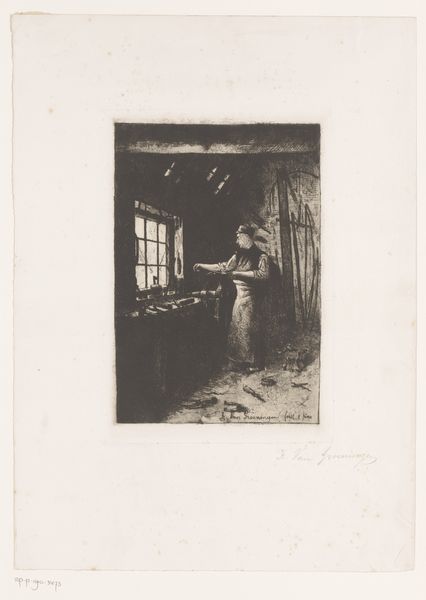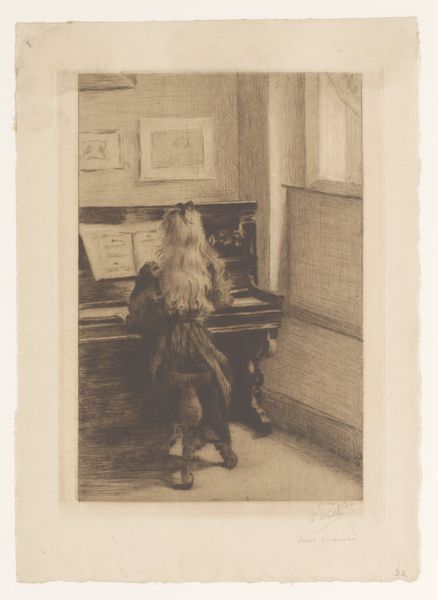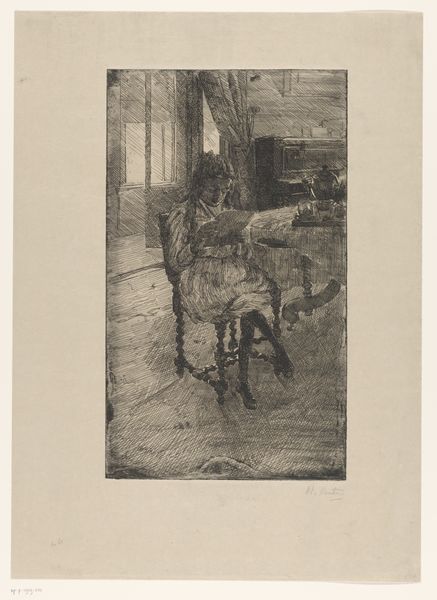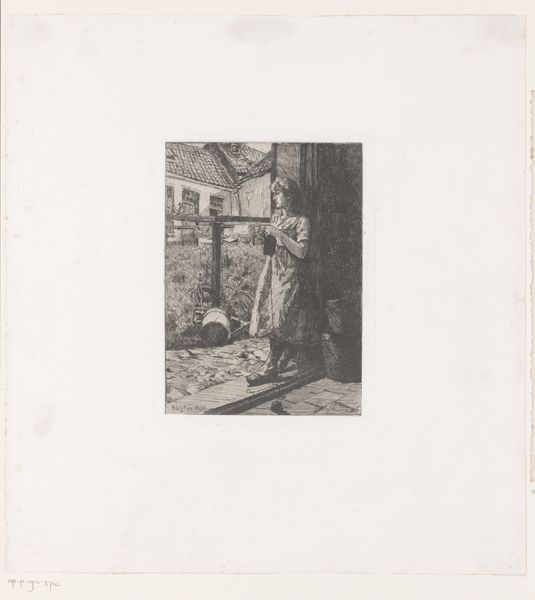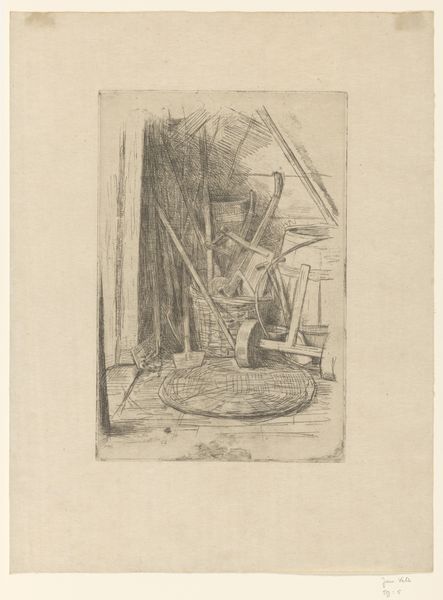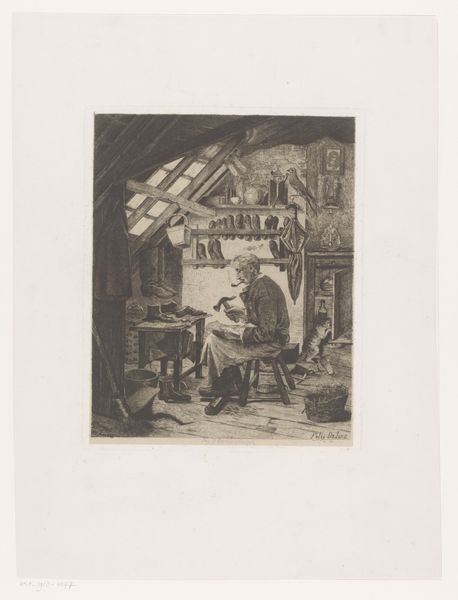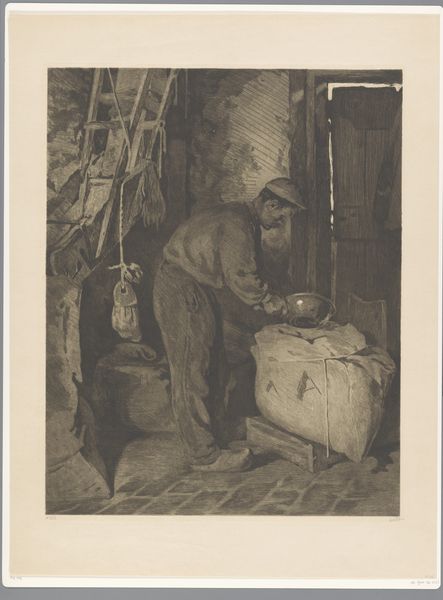
drawing, print
#
portrait
#
drawing
# print
#
genre-painting
#
realism
Dimensions: height 550 mm, width 452 mm
Copyright: Rijks Museum: Open Domain
Curator: Here we have Willem Witsen's "Molenaar bij een zak meel," or "Miller by a Sack of Flour," created around 1910-1911. It's a print, a drawing, currently held in the Rijksmuseum collection. What strikes you first about this work? Editor: It’s overwhelmingly...dusty. I feel like I can almost taste the flour in the air just by looking at it. There’s something somber in its realism. Curator: The social realism is quite potent here. We are presented with a scene depicting a miller at work. Consider the role of this artwork at the beginning of the 20th century; genre paintings such as these depicted not the heroic acts of historical figures or the wealth of the elite, but a view of everyday labor. How do you think it speaks to questions of class and representation? Editor: Absolutely. It’s interesting to view it through that lens. We are positioned as onlookers of this person’s toil. You can almost feel the physical demands of his job, but there is an undeniable sense of dignity here. This wasn't meant to aggrandize him or exploit him as a stereotype, but it’s a genuine representation of this kind of work. It raises interesting questions, too, about the relationship between labor and identity. Curator: I agree completely. The muted tones, the composition, how the figure is framed within the industrial setting... it speaks volumes about the subject's reality. Furthermore, let’s consider where something like this would’ve been exhibited, and who had access to it. Were these artworks reaching the working classes they represented, or was it largely a middle- or upper-class audience looking in? The public role of art is fascinating in cases like these. Editor: Yes, it underscores the inherent tension between representation and access. Are these images meant to evoke empathy or simply provide a distant observation? It’s crucial to recognize the socioeconomic forces that shaped both the creation and consumption of this art. Curator: It truly highlights the power that lies within art to shape our perceptions and narratives about societal roles. Thanks for lending me your insights on this revealing piece, full of nuance in portraying working class lives. Editor: It was insightful to examine the work with you as well, and discuss it’s connection with identity, gender, and political concepts.
Comments
No comments
Be the first to comment and join the conversation on the ultimate creative platform.
